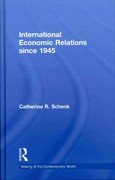Question
Error Analysis Errors between the theoretically calculated values for differential pressure and the measured values would have resulted from multiple reasons, listed below: - Systematic
Error Analysis
Errors between the theoretically calculated values for differential pressure and the measured
values would have resulted from multiple reasons, listed below:
- Systematic errors,
- Procedural errors and,
- Human errors.
Systematic errors relate to the actual physical experimental gear. The experiment composed
of an aperture, with a single entry and exit, which housed a fan, pressure monitoring sensors,
and an orifice at the exit. The aperture is susceptible to tears, may not be airtight, or may have
an imperfect connection, all resulting in additional intake/outtake airflows affecting measured
values.
At the beginning of testing the three fan speeds, the entire system was recalibrated, all
sensors were zeroed, and the orifice was open to its largest diameter. However, there are
possibilities that the sensors would not zero properly as there was no control taken; variations
in atmospheric pressure, and inconsistencies in flow behaviour due to human movement
around the experimental set up.
Procedural errors relate to the inconsistencies between each trial. For each trial, the system
was allowed to equilibrate, which involved allowing consistent airflow through the duct for a
few seconds (10-15 seconds). Errors would arise as the system would not have been allowed
to equilibrate appropriately, resulting in inconsistent measurements.
Human errors relate to how the experiment is conducted. Therefore, errors that would stem
from human error could have affected any aspect of the experiment, from its physical set-up,
its conduction, and measurement.
4.0 Conclusion:
Bernoulli's equation, derived from Reynold's transport theorem (which assumes the
conservation of mass and energy), provides a relation between differential pressure and
volumetric flow rate for any fluid flow. Fundamentally, it shows the inversely proportional
relation of the two; an increase in volumetric flow rate results in a decrease in differential
pressure, and vice versa. This was consistent with the fan performance results as displayed in
graph 1.
Dimensional analysis is a highly efficient/effective way of analysing multivariate factors
within two or three non-dimensional coefficients. Therefore, it was used to model the fans
performance to be able to obtain differential pressure or volumetric flow rate values that
could not be experimentally obtained. Dimensionless coefficients, flow () and head (),
were plotted to model the fans performance.
To assess the feasibility of using the dimensionless coefficients to obtain values for the
differential pressure/volumetric flow rate, three pre-determined flow coefficients were chosen
and their subsequent differential pressure were calculated. Minute errors between the
theoretical and measured values were present, however all the potential error sources were
identified and examined, therefore it can be concluded that the theoretical values provide a
fairly accurate approximation.
Step by Step Solution
There are 3 Steps involved in it
Step: 1

Get Instant Access to Expert-Tailored Solutions
See step-by-step solutions with expert insights and AI powered tools for academic success
Step: 2

Step: 3

Ace Your Homework with AI
Get the answers you need in no time with our AI-driven, step-by-step assistance
Get Started


